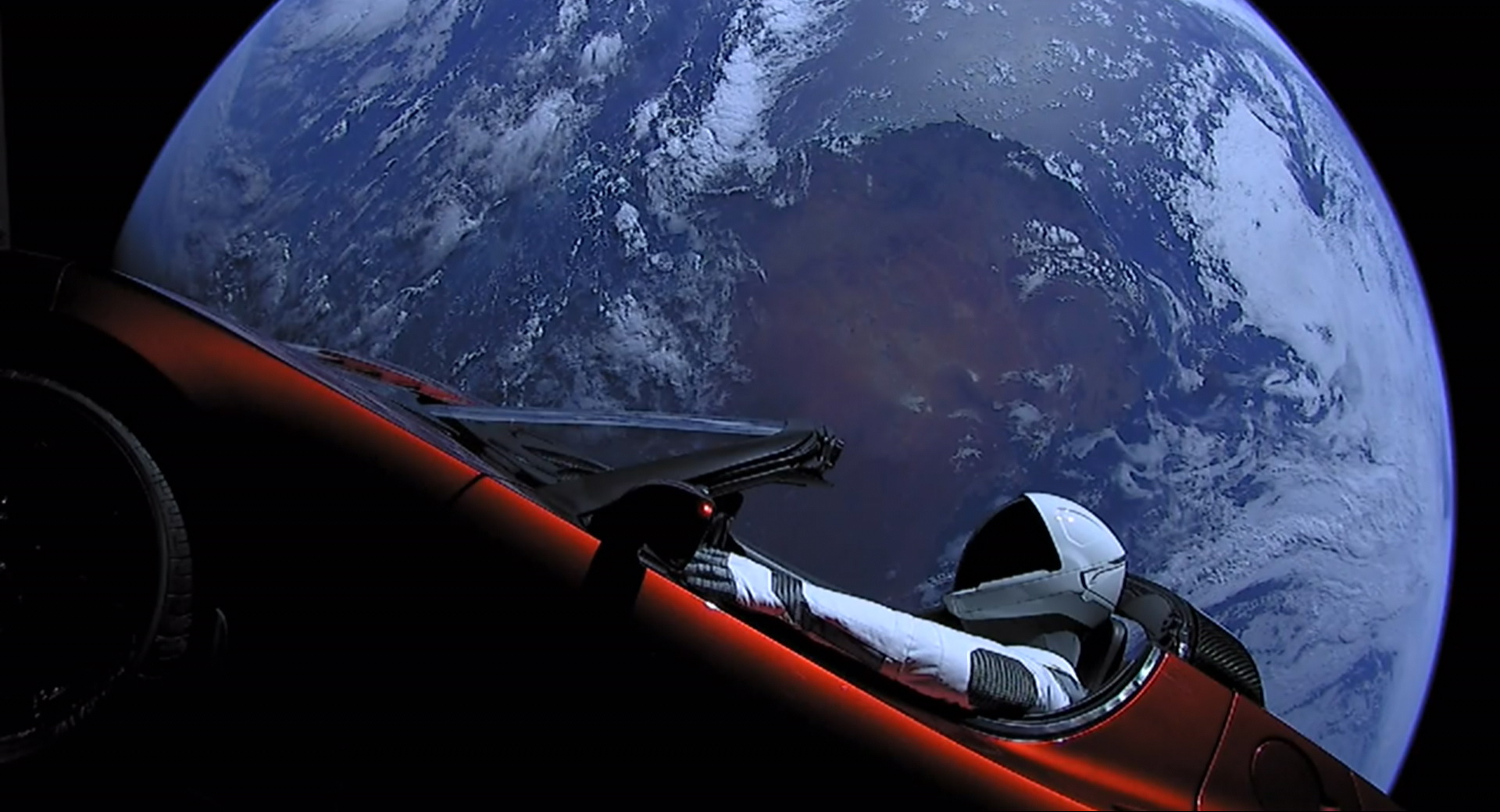It’s been more than two years since SpaceX launched Starman into the void, behind the wheel of a Tesla Roadster. Since then, the vehicle is already on its second trip around the sun, this latest pass bringing it relatively close to planet Mars.
According to SpaceX, the duo came within 0.05 astronomical units of the Red Planet, or just under 5 million miles (8 million km). Still, it wasn’t close enough to get pulled in by gravity.
Now, if you’re wondering what the car might look like after some 32 months in space, well, it probably wouldn’t ace its Carfax report, and the main culprit here is solar radiation.
Read Also: Here’s Where Elon Musk’s Tesla Roadster Is After Two Years In Space
According to LiveScience, solar radiation would have likely already wrecked some of the Tesla’s exposed organic materials, such as its cherry red paint, rubber tires, leather seats – breaking the carbon bonds that hold them together.
Starman, last seen leaving Earth, made its first close approach with Mars today—within 0.05 astronomical units, or under 5 million miles, of the Red Planet pic.twitter.com/gV8barFTm7
— SpaceX (@SpaceX) October 7, 2020
Without the protection of Earth’s atmosphere and its magnetic field, even various plastics or carbon fiber materials would decay, although it’s tough to say if that’s already happened. The materials with fewer bonds holding them together would be the ones to go first, said William Carroll, a chemist at Indiana University and expert in plastics and organic molecules.
Give it enough time and the first-gen Tesla Roadster will be reduced to nothing more than its well-secured inorganic parts, such as the aluminum frame, internal metals and any glass surfaces that don’t shatter due to any possible meteor impacts.
Still, the car should remain somewhat recognizable, even after a million years in space, says Richard Sachleben, a retired chemist. More than that, well, his guess is as good as ours.
“A billion years is a long, long time,” he wrote back in 2018, adding that there’s “no telling what it will be like by then.”




